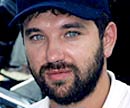|
Historical Reference.
In 1735 one of the detachments of the Great
North Expedition under the guidance of Peter Lassenius stayed
for winter in the mouth of the Khara-Ulakh river. The detachment
had the task to chart the coastal line of Russia starting
from the Lena River to the Bering Strait, dividing Asia and
America. According to the historical version all members of
the detachment had the scurvy. 36 crewmembers out of 46 died.
Their grave was lost.
The Great North Expedition (1733-1743),
the official name – the Second Kamchatskaia Expedition, under
the leadership of the Captain-Commander Vitus Bering, compiled
the chart of the Russian territories. They described all north
and east margins of Russia from Arkhangelsk to Okhotsk, enormous
interior spaces of the Eastern Siberia, the Kuril and Aleutian
Islands, discovered routes to Japan and America. The Expedition
collected unique data about the nature and history of Siberia
and the Far East. This was the largest exploring expedition
in the history of the mankind. As a result of its activities
the domains of Russia extended to the three parts of the world:
Europe, Asia, and America. In the course of the expedition
the Russian ships "St. Peter" and "St. Pavel" under the command
of V. Bering and A. Chirikov for the first time in the Russian
history carried out the transoceanic voyage and reached the
shores of America.
The Great North Expedition required employment
of enormous human and material resources. 13 ships built in
Arkhangelsk, Tobolsk, Yakutsk and Okhotsk, supported 7 research
detachments, which had sufficient amount of equipment and
food. The crews of the ships were at full strength.
The number of participants of the main and
subsidiary detachments amounted to around 5 000 people. But
for the present we have the reliable portraits only of five
persons: Stepan Krasheninnikov, Johan Gmelin, Vitus Bering,
Vasily and Tatiana Pronchishchev. The portraits of the two
first persons, famous Russian scientists, were published as
drawings in their transactions.
In 1991 the Russian-Danish expedition, organized
by the Club, discovered the burial place of Vitus Bering,
Captain-Commander, at the Commander Islands. Then we had restored
the genuine portrait of this world famous navigator by the
method of plastic reconstruction of his scull.
The other expedition, organized by the Adventure
Club in 1999 at the mouth of the Olenek River, the north of
Yakutiya, achieved outstanding results: reconstruction of
the portraits of Vasily Pronchishchev, the chief of one of
the detachments, and his wife Tatiana Pronchishchev, who was
the first in history woman – Arctic explorer.
|










